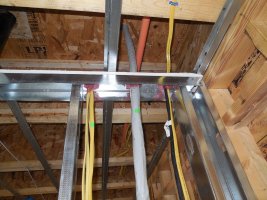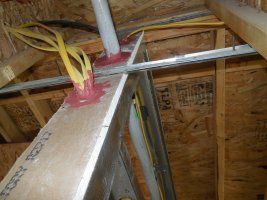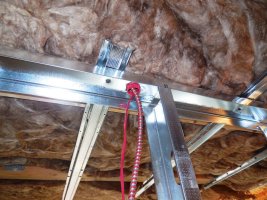jar546
CBO
A recent code clarification provides important guidance on when fireblocking is required in Type V construction, particularly when noncombustible materials such as steel studs are used in interior walls. The interpretation, which applies to both the 2021 and 2024 editions of the International Building Code (IBC), helps define how Section 718.2 is to be applied in mixed-material assemblies.
The key factor in determining whether fireblocking is required is the presence of combustible concealed spaces. Section 718.2 specifically addresses fireblocking for combustible construction, which is defined by concealed spaces formed by or surrounded by combustible materials. Fireblocking is used to limit the spread of fire, smoke, and gases through these concealed voids.
While Type V construction is typically associated with wood-framed assemblies, the code allows a wide range of materials, including noncombustible options. That means a Type V building could be constructed entirely using noncombustible components, such as steel studs, without triggering the fireblocking provisions of Section 718.2—provided there are no combustible concealed spaces.
Looking specifically at Section 718.2.2, which requires fireblocking in concealed stud wall and partition spaces, the ICC confirms that if steel studs are used, the requirement would not apply. Since the interior wall cavities do not consist of combustible materials, there is no concealed combustible space to protect.
Similarly, Section 718.2.3 addresses fireblocking at intersections between vertical and horizontal assemblies. If the floor or roof system is combustible but the wall assembly is framed with steel studs, the steel framing itself provides a noncombustible barrier. In this case, the vertical wall interrupts the horizontal combustible path, and additional fireblocking is not required.
Conclusion:
Fireblocking under Section 718.2 is only required where combustible concealed spaces exist. In a Type V building using steel studs for interior partitions, the use of noncombustible materials eliminates the need for fireblocking in those specific wall assemblies, even if other parts of the structure are framed with wood. As always, code officials should verify that any omitted fireblocking is based on actual material use and not merely the construction type classification.
The key factor in determining whether fireblocking is required is the presence of combustible concealed spaces. Section 718.2 specifically addresses fireblocking for combustible construction, which is defined by concealed spaces formed by or surrounded by combustible materials. Fireblocking is used to limit the spread of fire, smoke, and gases through these concealed voids.
While Type V construction is typically associated with wood-framed assemblies, the code allows a wide range of materials, including noncombustible options. That means a Type V building could be constructed entirely using noncombustible components, such as steel studs, without triggering the fireblocking provisions of Section 718.2—provided there are no combustible concealed spaces.
Looking specifically at Section 718.2.2, which requires fireblocking in concealed stud wall and partition spaces, the ICC confirms that if steel studs are used, the requirement would not apply. Since the interior wall cavities do not consist of combustible materials, there is no concealed combustible space to protect.
Similarly, Section 718.2.3 addresses fireblocking at intersections between vertical and horizontal assemblies. If the floor or roof system is combustible but the wall assembly is framed with steel studs, the steel framing itself provides a noncombustible barrier. In this case, the vertical wall interrupts the horizontal combustible path, and additional fireblocking is not required.
Conclusion:
Fireblocking under Section 718.2 is only required where combustible concealed spaces exist. In a Type V building using steel studs for interior partitions, the use of noncombustible materials eliminates the need for fireblocking in those specific wall assemblies, even if other parts of the structure are framed with wood. As always, code officials should verify that any omitted fireblocking is based on actual material use and not merely the construction type classification.



